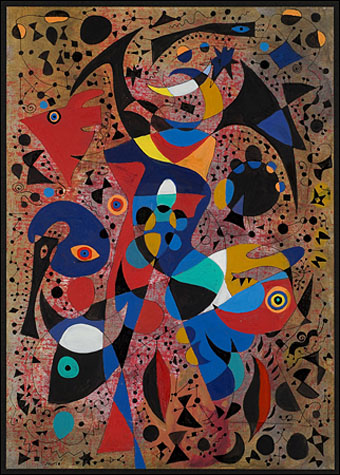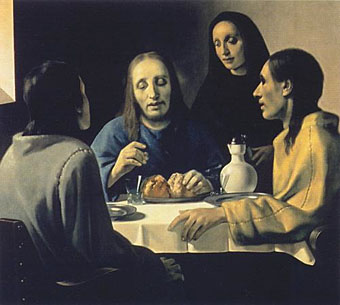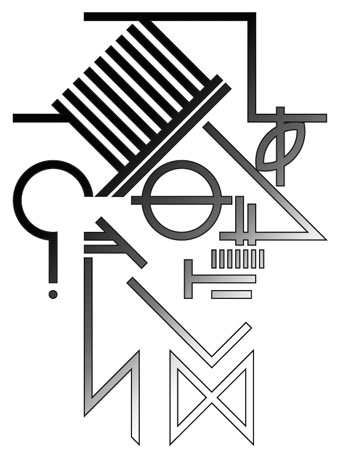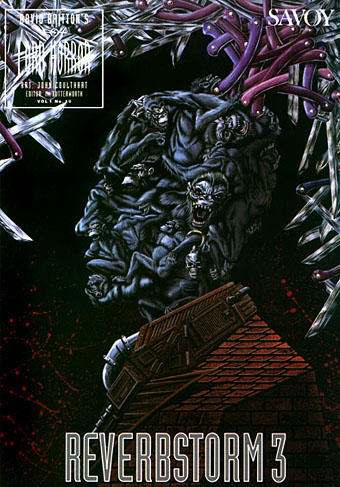
Harlequin Disturbs Sleeping Fish by John Myatt
in the style of Joan Miró (no date).
Fakes and Forgeries: The Art of Deception is an exhibition at the Bruce Museum, Connecticut, running from May 12th–September 9th 2007.
For its major spring/summer exhibition, the Bruce Museum explores a subject that is exceptionally topical in today’s art world. Fakes and Forgeries: The Art of Deception presents 60 examples of Western paintings, works on paper, sculpture and decorative arts that have been recognized as imposters, including examples of the rarest and most famous deceptive works.
Fakes and Forgeries: The Art of Deception reveals the strategies and techniques of the world’s most successful forgers and exposes the extraordinary lengths to which they went to produce authentic-looking artworks. It also addresses techniques used to expose these deceptions, including X-ray fluorescence, pigment analysis, spectrography, dendrochronology, and carbon dating.
The exhibition presents Western painting and sculpture that has been faked from all periods of art, starting with fakes from antiquity and moving chronologically through the Middle Ages, Renaissance and Baroque eras, exposing forgeries ranging from medieval sculpture and quattrocento gold backs to the rare art of Vermeer.

Christ and His Disciples at Emmaus by Han van Meegeren
in the style of Jan Vermeer (1937).
What exactly is a fake or a forgery? Perhaps the biggest problem in this field is the complexity of determining what constitutes an authentic work versus a vast array of faked, forged, copied, attributed, misattributed and replicated work. A fake is a work that replicates an existing work of art; it may be a deliberate deception or simply not the real thing. A forgery is a work that mimics the style of an artist or replicates his signature in a deliberate attempt to deceive.
Paintings in this exhibition that have fake signatures include forgeries of Edouard Manet, Juan Gris, and Giorgio de Chiricio; the etching Le Bain purportedly by Picasso also bears a forged signature. One of the show’s highlights is Han van Meegeren’s legendary forgery, Christ and His Disciples at Emmaus, in the style of Johannes Vermeer, which is arguably the most famous forgery in the world.
Bruce Museum
One Museum Drive
Greenwich
CT 06830
USA






